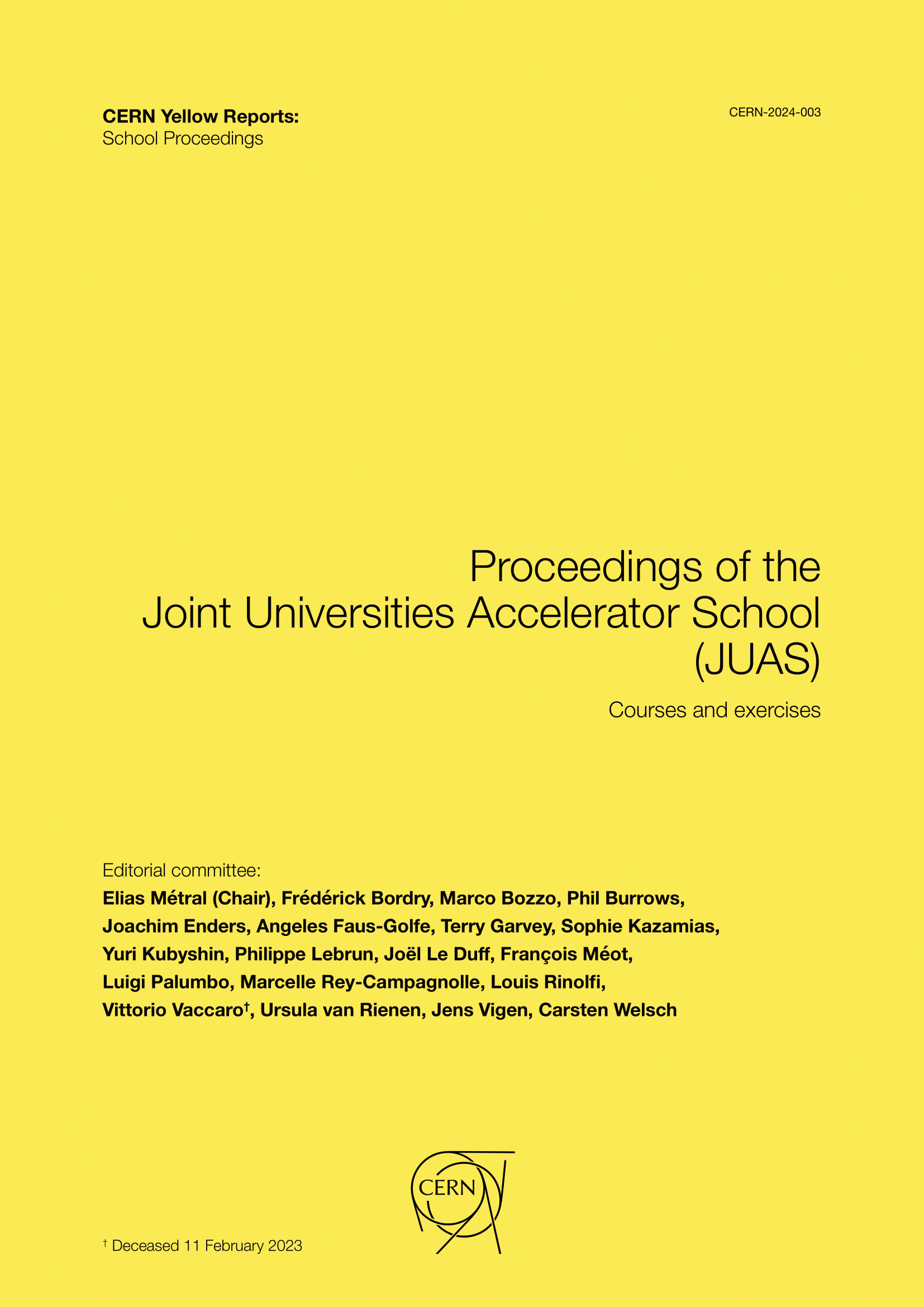III.16 — Magnets for future colliders: the Muon Collider as a case study
DOI:
https://doi.org/10.23730/CYRSP-2024-003.2179Abstract
The Muon Collider, one of the options considered for the future of particle physics at the energy frontier, poses many challenges to accelerator technology. The magnets for the muon beam production, acceleration and collision are one of the most demanding systems, for many reasons. Firstly, collider performance in terms of energy and luminosity translates in the demand for high fields, high field rates, and large apertures, thus challenging magnet science and engineering well beyond state-of-the-art. At the same time, the operating environment is very harsh: the decay of highly energetic muons, whose products are difficult to shield, results in large heat and radiation loads that need to be managed efficiently. Finally, a muon collider, as any other future collider at the energy frontier, needs to be affordable and efficient to produce sustainable science. The magnets, the single system with the largest cost and power figures, are naturally at the center of the attention also from this point of view. In this note we review the magnet demands and present the conceptual solutions that would meet them. We then expand on the crucial role of high temperature superconductors to meet such challenges. Most interesting, addressing magnet technology challenges for a muon collider will benefit any future collider at the energy frontier, as well as many other fields of scientific and societal application of magnet technology.
Downloads
Published
Issue
Section
License

This work is licensed under a Creative Commons Attribution 4.0 International License.
Authors who publish with this publication agree to the following terms:
- CERN retains copyright and publishes the work licensed under the Creative Commons Attribution License 4.0 that allows others to share the work with an acknowledgement of the work's authorship and initial publication in this series.
- Authors are able to enter into separate, additional contractual arrangements for distribution of the published version of the work (e.g., post it to an institutional repository or publish it in a book), with an acknowledgement of its initial publication in this series.
- Authors are permitted and encouraged to post their work online (e.g., in institutional repositories or on their website) prior to and during the submission process, as it can lead to productive exchanges, as well as earlier and greater citation of published work (See The Effect of Open Access).

